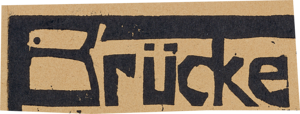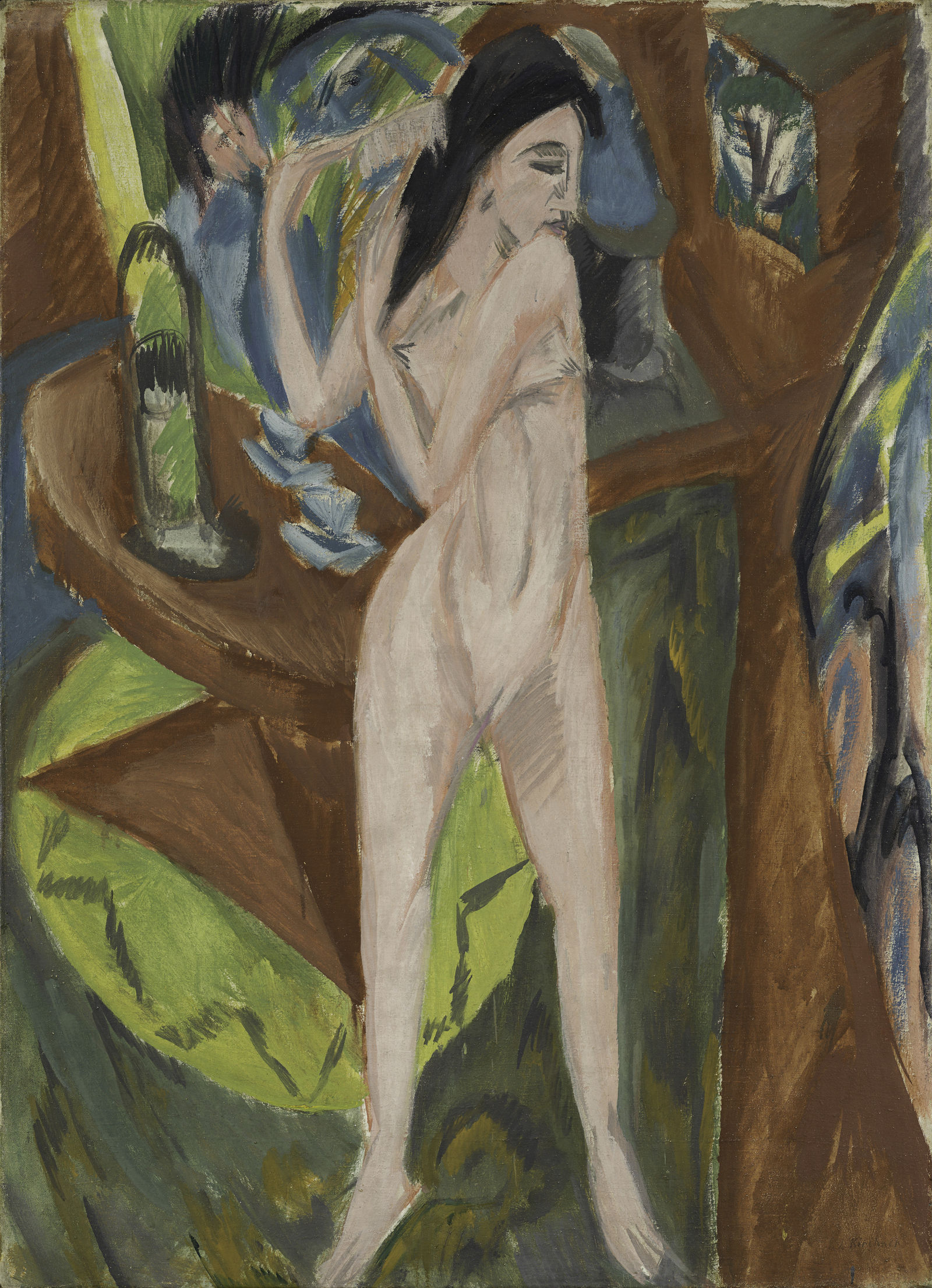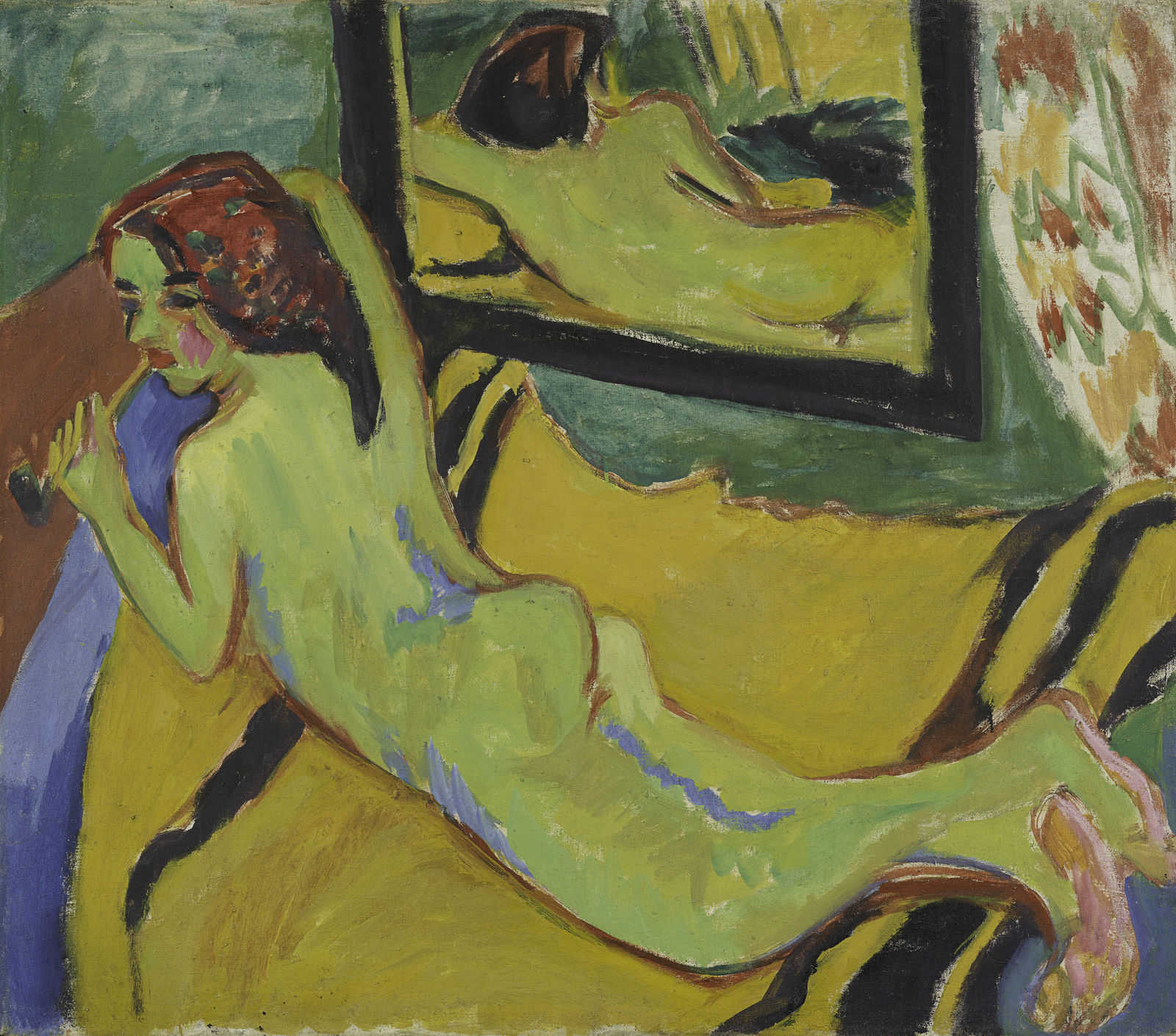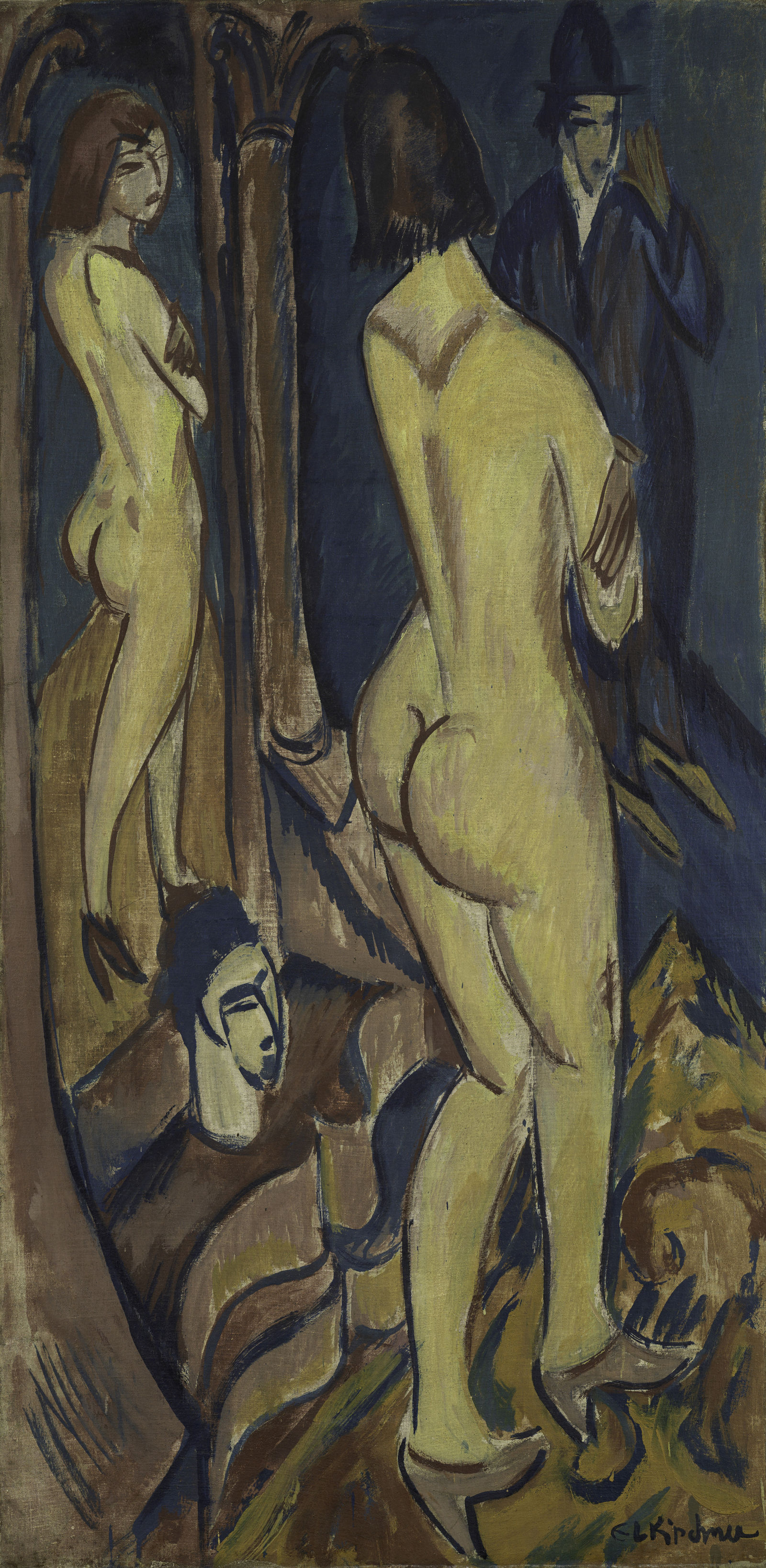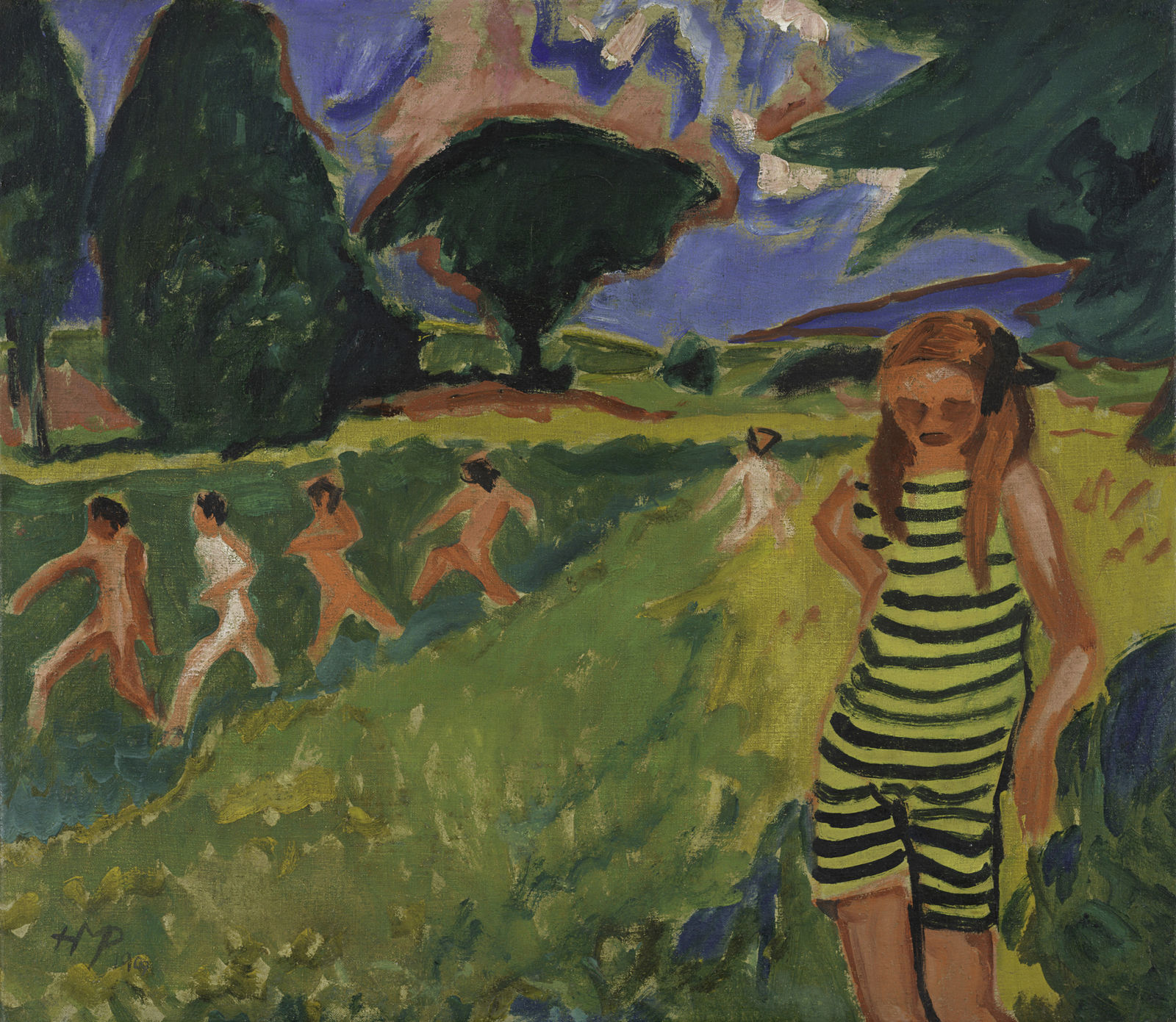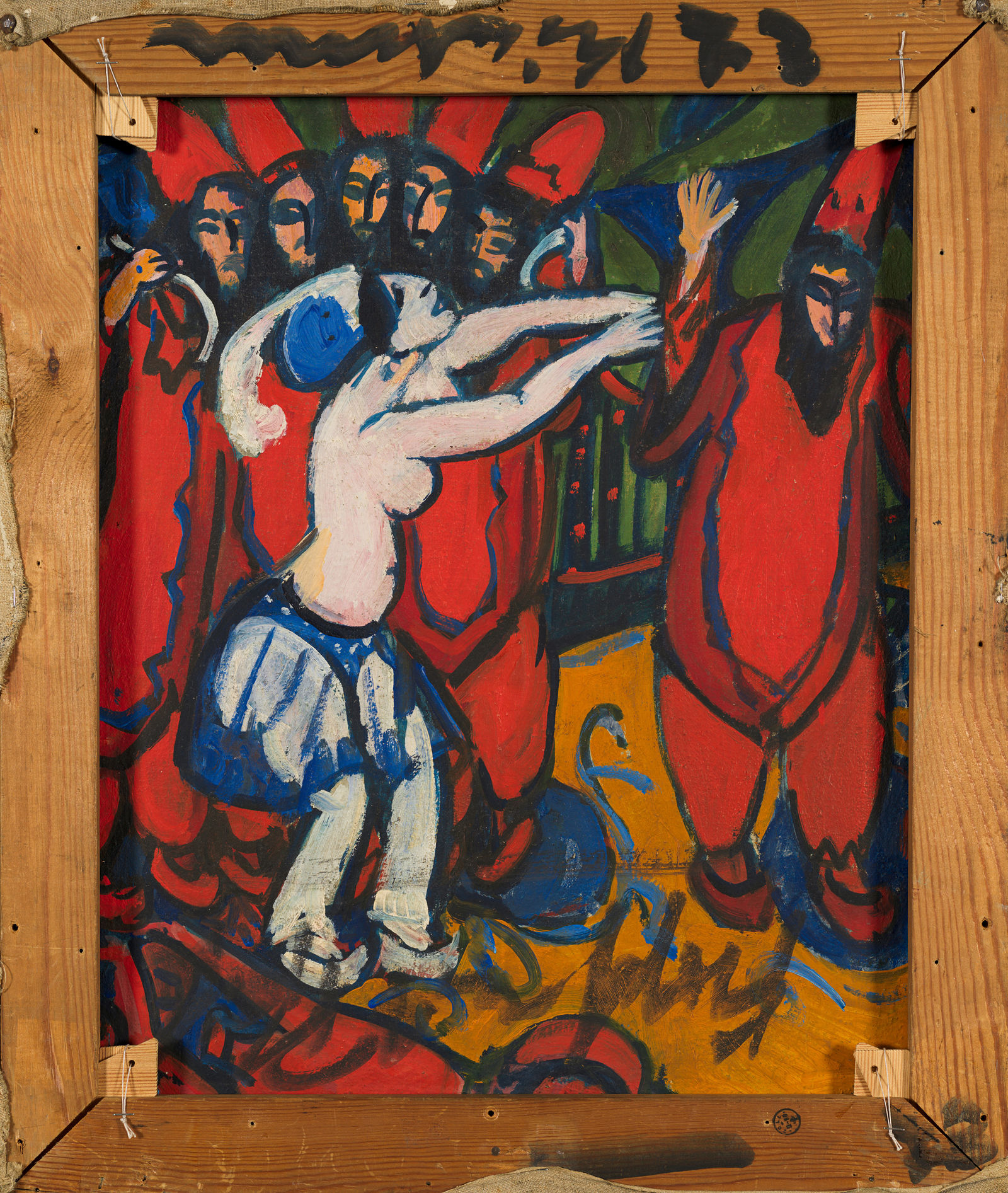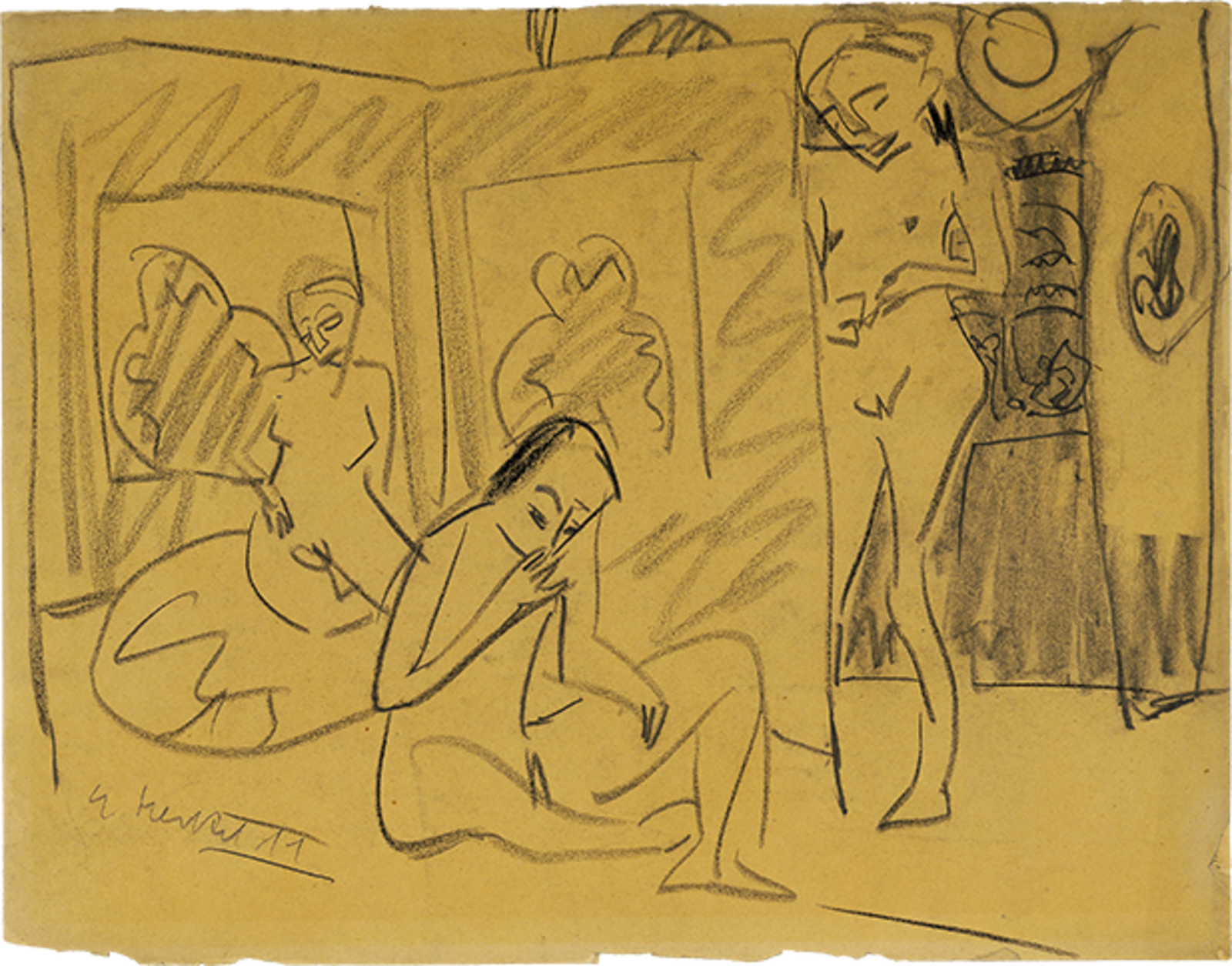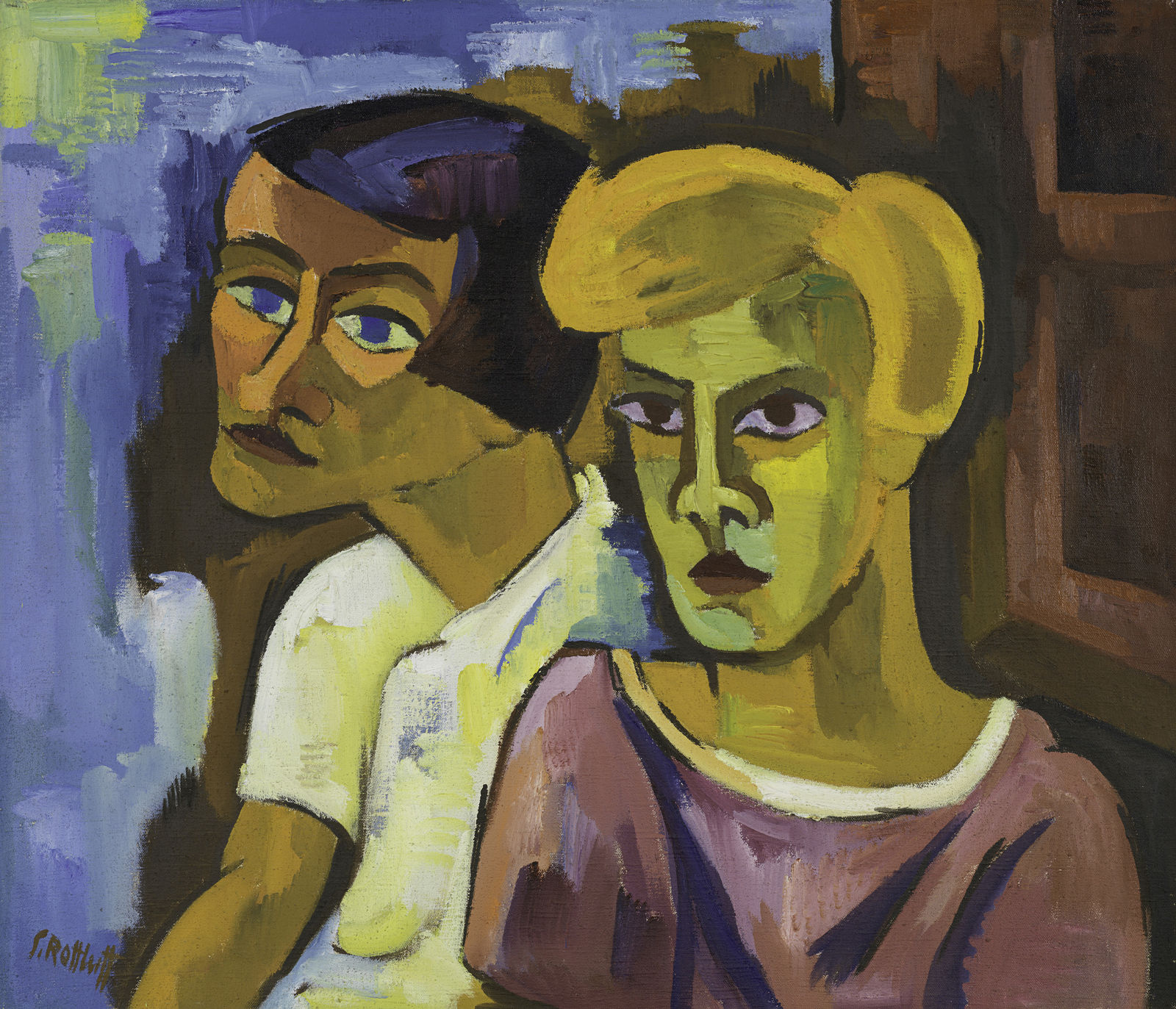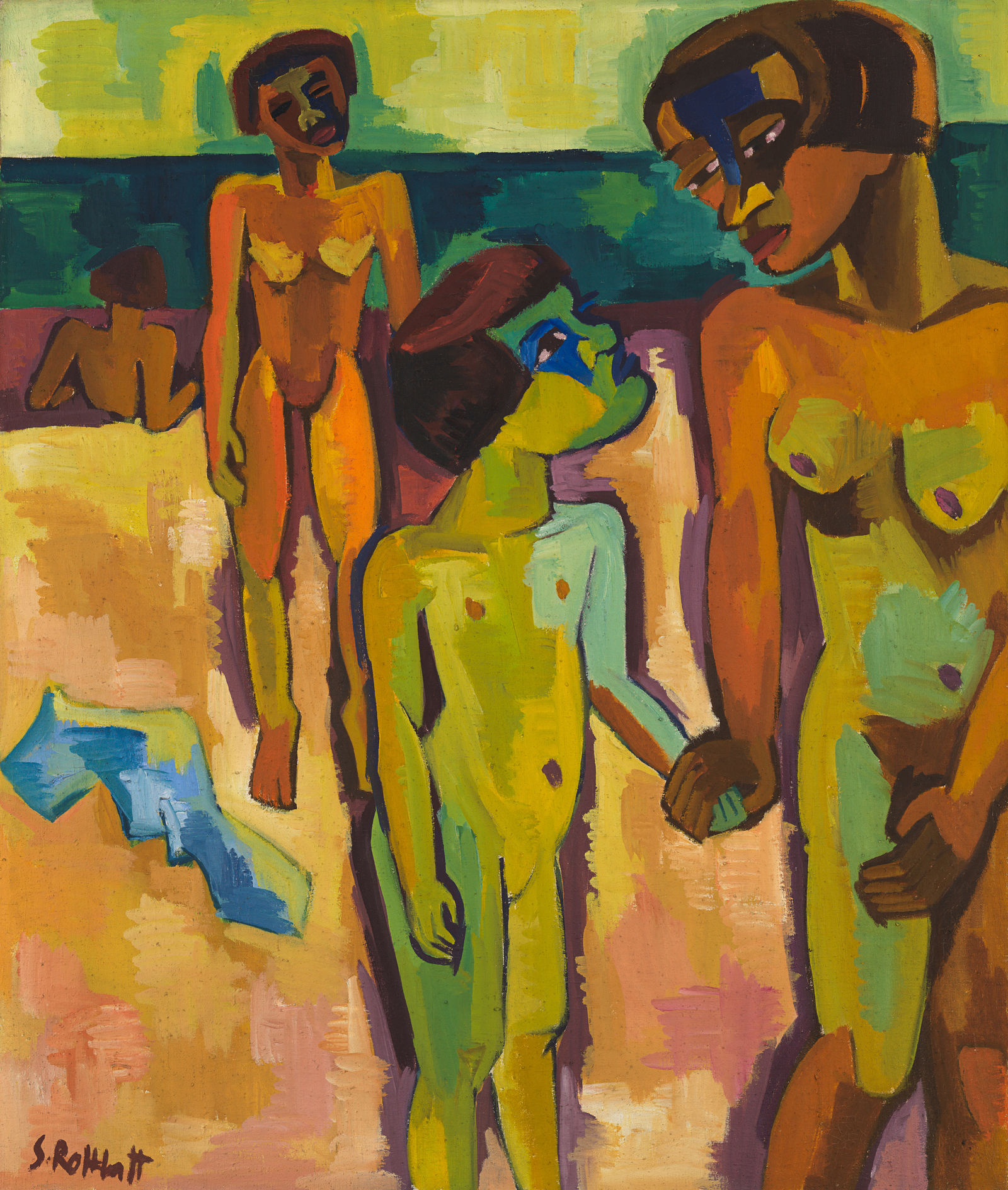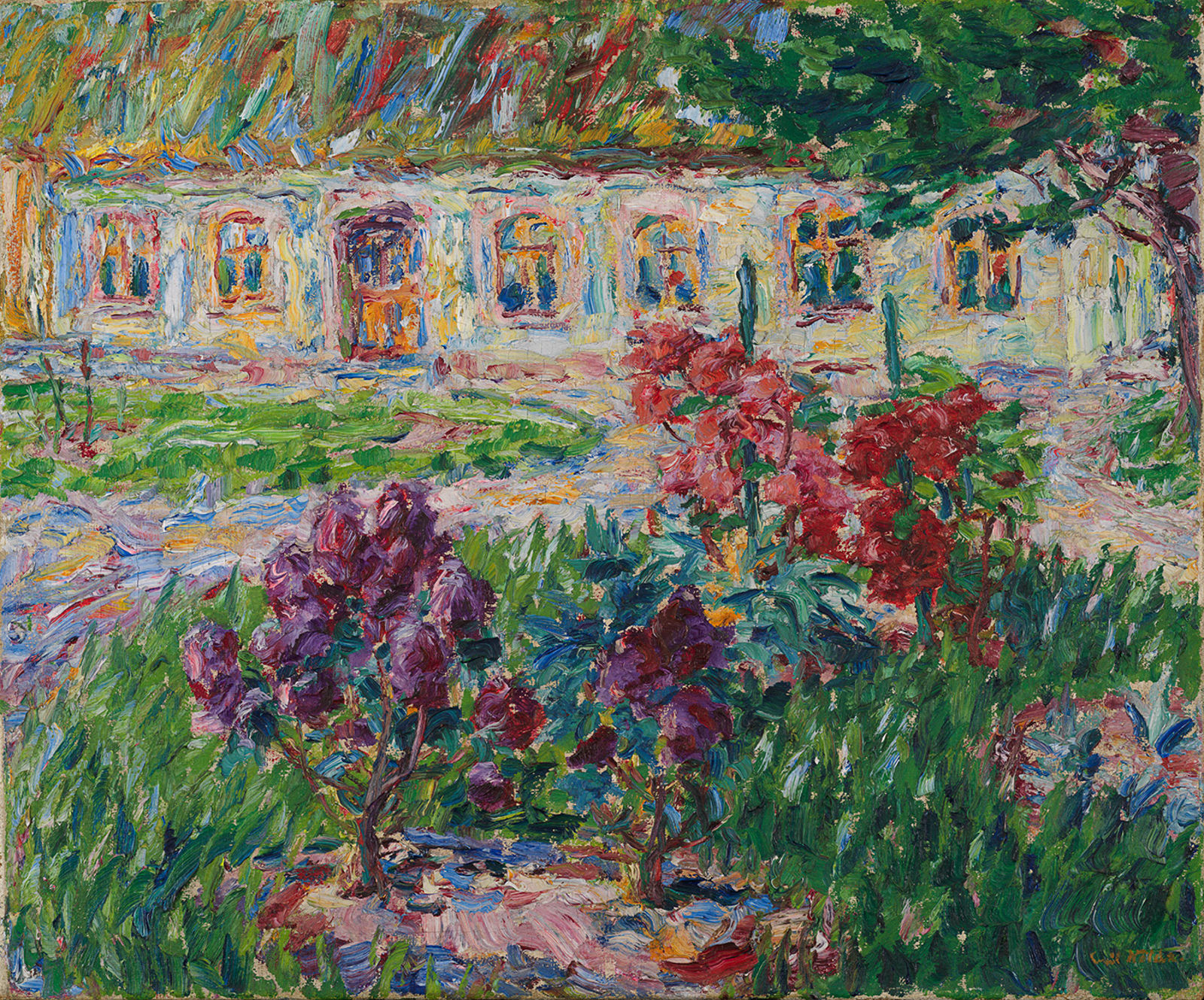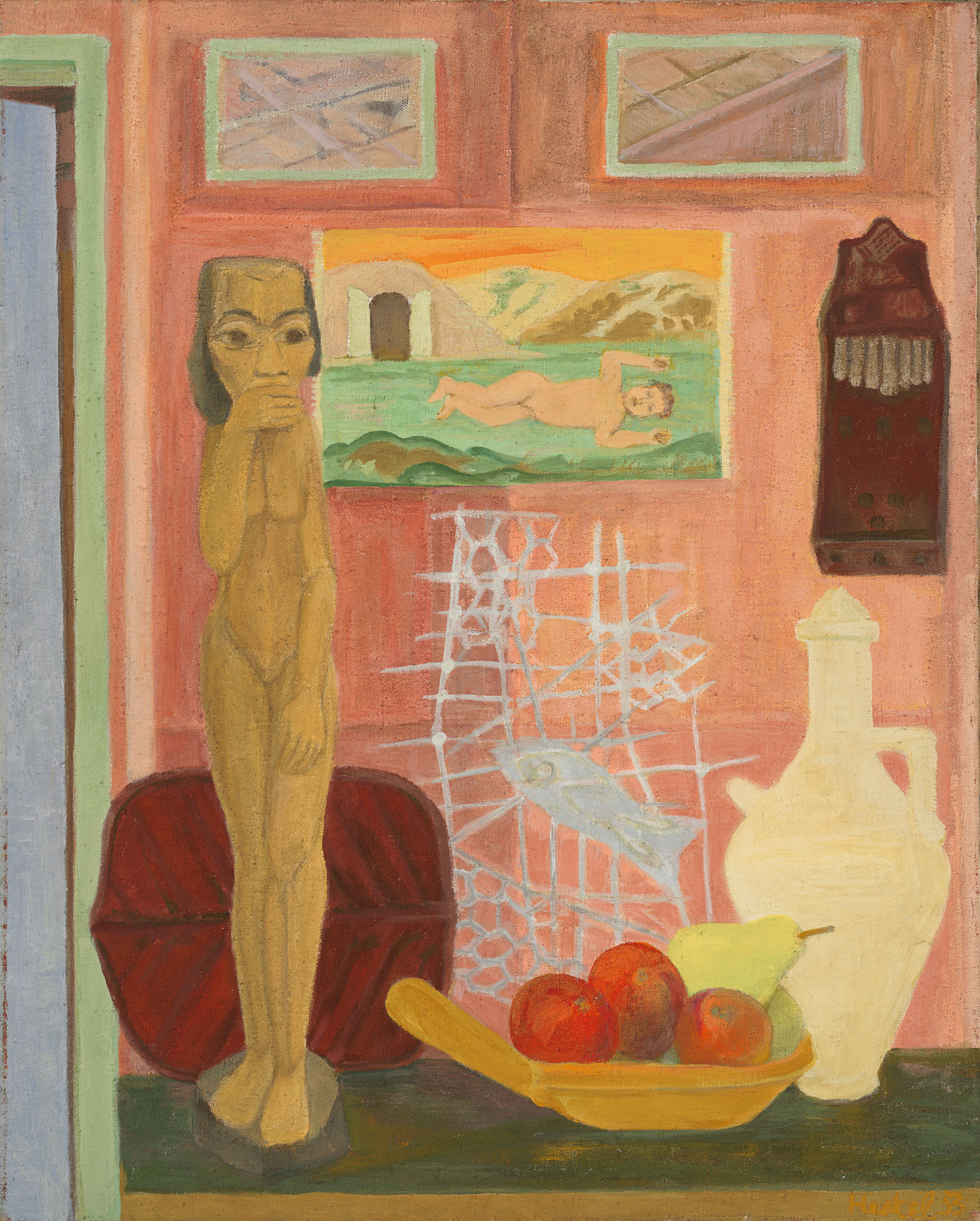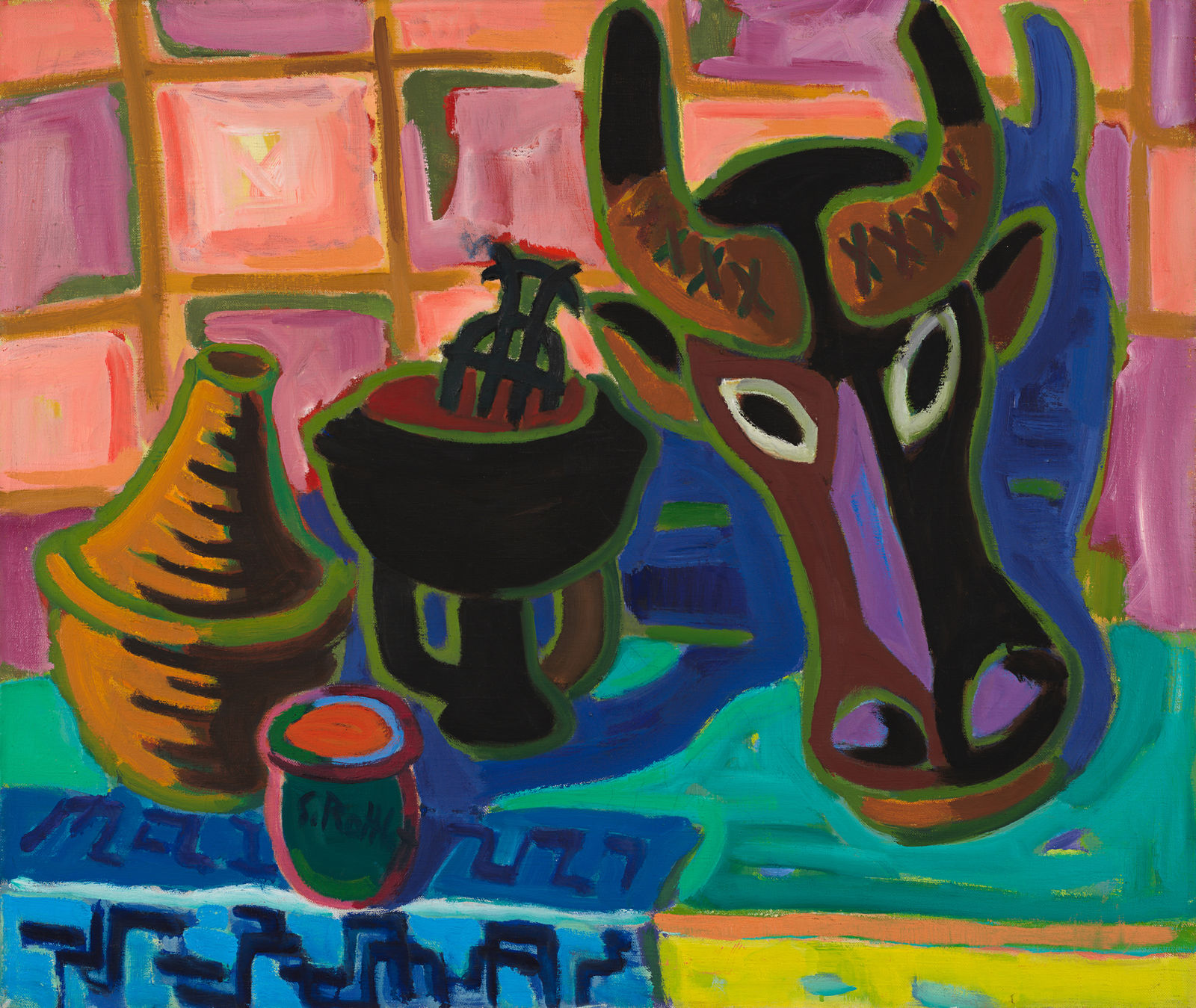About (VARIOUS ANSWERS)
How do you look at a work of art? What memories and associations does it elicit? What kinds of connections can you make to social themes?
Various Answers is an experimental pilot project that paves the way for different approaches to artworks in the Brücke Museum’s collection. In the online collection, diverse voices introduce individual perspectives on the work—in video, audio, and text formats. A wide variety of questions, topics, and contexts emerge beyond the purview of art-historical disciplines.
Twelve works from the collection were examined in twelve workshops. Four moderators led the workshops and determined their individual areas of focus. They intentionally invited people who possess knowledge and experiences that the museum lacks.
Keywords, questions, and debates emerged through the discussions. On this basis, an editorial team prepared the content for online publication, expanded several participants’ remarks with interviews, and supplemented the material with commentaries and overriding topics.
The contributions are integrated into the collection online as visual interventions that disrupt the usual appearance of the website. This visualisation illustrates the experimental character of Various Answers, in which the museum team could test out new ways of disseminating knowledge. Routine museum operations are challenged and expanded in a participatory and emancipatory way.
On the idea of Various Answers
Daniela Bystron (curator for outreach, Brücke-Museum) and Judith Kirchner (project leader, Various Answers) discuss the point of departure and idea for Various Answers.
The following questions played a key role: What kind of knowledge is preponderant in an art museum? Who is involved in the production of knowledge and processes of narration? Which stories, kinds of information, and perspectives are missing? How can content be designed to be as open to multiple perspectives as possible? How can a museum invite participation digitally? And how can a museum listen and learn?
On the Workshops
The moderators—Marwa Younes Almokbel, Josephine A.V. Deutesfeld, Sandra Ortmann, Dachil Sado—reflect on their conception and facilitation of the focus group workshops.
Twelve digital workshops with up to six participants and allotted three hours each enabled an intensive examination of a piece of art in the Brücke-Museum collection. Spontaneous, intuitive, and personal statements were intentionally collected from participants without additional information or prior (art historical) knowledge. These statements then served as the basis for an exchange with one another. One person from the curatorial team of the Brücke-Museum participated in the role of an active listener.
(Dachil)
Text
My name is Dachil Sado, and I am a visual artist focusing on performance art. I also work in art mediation.
For Various Answers, I was interested in looking at historical works of art from today’s perspective in conversation with other people to reflect on what these works communicate and the sorts of references they might elicit.
In selecting a work of art from the collection, I opted for a landscape painting. No figures, bodies or human interference are shown here. The topics that interested me the most in the exchange about this work were landscape, color, and painting from a contemporary and artistic perspective. In the focus group we also discussed socially relevant topics like colonial contexts and political implications.
I invited painters and artists to this workshop. They are all familiar with visual and, in some cases, painterly processes. With their various areas of artistic expertise and experiences, I wanted to gain interesting, new, and above all, current insights into the work of Emil Nolde. In my preparation and moderation of the focus group workshop, one of the questions I was concerned with was: what contexts can a landscape painting convey?
With the focus on the work’s painterly and creative aspects, I was very surprised—in a good way—to discover through this exchange how many complex ideological positions can be read into an ostensibly harmless and beautiful painting, and how these reflect the political currents of the time. This was surprising because the discussion dealt with a painting that does not convey a directly political stance or narrative.
On Editing the Content
Authors and journalists Sonja Eismann and Josephine Papke speak about the editorial process of Various Answers.
In contrast to the technical language of art historical writing, journalistic texts are more subjective, creative, and accessible. Sonja Eismann and Josephine Papke were especially interested in using contemporary approaches as well as inclusive, non-academic language; here, they report on their selection process and priorities. It was important to them that they convey everyday knowledge, diversity, and multiple perspectives. The idea was not just to deal with explanatory content but to intentionally include associative thoughts, critical commentary, and artistic contributions as well.
Topics
Twelve overarching threads of discussion accompany the twelve chosen works. They were developed through conversations between the participants and moderators as well as the editing work of the editorial team. Gathered here are contributions on current, socially relevant topics that loosely connect to the collection but do not explain the works. The content can also be linked to further pieces in the collection not surveyed as a part of this project. The twelve themes are suggestions that try to bring together new perspectives and always remain open to updates and elaboration.
Works
Twelve works were surveyed within the scope of the pilot project. You can find the overview here and click through the contributions that emerged collaboratively through these twelve workshops. The selections are not representative of the Brücke-Museum collection but rather were chosen by the project team and museum together.
Imprint
Various Answers:Language, Knowledge, Narration
Project lead: Daniela Bystron, Judith Kirchner
Conception and Moderation Workshops: Marwa Younes Almokbel (Das gelbschwarze Trikot, Vor der rosa Wand), Josephine Ansah Valerie Deutesfeld (Artistin, Freundinnen, Im Atelier, Zirkusszene), Judith Kirchner (Sich kämmender Akt), Sandra Ortmann (Liegender Akt vor Spiegel, Nach dem Bade, Rückenakt mit Spiegel und Mann), Dachil Sado (Afrikanisches, Jägers Haus auf Alsen)
Editorial Staff: Sonja Eismann, Josephine Papke
Translations (German, English): Good & Cheap Art Translators
Translations (Arabic): Marwa Younes Almokbel
Proof Reading: Julia Stoff
Technical Production: Sebastian Weise, Marlies Pahlenberg (Assistance)
Administration: Barbara Jerusalem, Julia Schmitt, Ute Kirschbaum
Design: Julia Born, Julia Novitch
Web Development: Systemantics
Assistance CMS: Tabesch Mehrabi
Speaker (Audio: Questions, Associations): Dena Abay, Lamin Leroy Gibba, Hêvîn Tekin
Workshop Participants: Ahmad El Hamidi, Alice Z Jones, Anwar Al Atrash, Athena Solomon B., Auro Orso, Bassel Zoughip, Bettina Keß, Betül, Brigita, Britta, Charlotte Sohst, Christèle Mapuku, ck, Claude Förster, Dani Hasrouni, Dilek, Elena, Emilia, Evelina Reiter, Fabio Auerswald, Fafali Roy Ziga-Abortta, Felicia, Feven, Franziska Achatzi, Frédéric Duval, Icecold Alma, Jamie, Johan, Josephine Ansah Valerie Deutesfeld, Jülia Devies, Juri, Kifan Alkarjousli, Konni Zeidler, L*, Lea Abena Pahl, Lea Malaika Som, Lena Scheiterbauer, Lotte Wintraecken, Maria Diallo, Maria González Leal, Meskerem, Milton Camilo, Miriam Chebaibai Koch, Myriam, Miriam Rainer, Nadine Nzambisa Ngolo, Natascha Anahita Nassir-Shahnian, Princela Biyaa, Rama Alsaman, Ramin Parvin, Rania, Samantha Joy Nyamekye Deutesfeld, Sandra Burkhardt, Sandi, Stephanie Achatzi, Susheela Mahendran, Sydney, Tabesch, Tanya, Viviana, Wanjiru Njehiah, Yemisi Babatola, Yuyu Elmi, Zinaida Sebastiao Lina
Additional Content: A. Rochaun Meadows-Fernandez, Aischa Sane, Anne Graefer, Aya Soika, Christiane Remm, Daddypuss Rex, Dani Hasrouni, Dieter Frey, Dominique Grisard, Elena Schroll, Felix Denk, Isabel Fischer, Johann Voigt, Josephine Papke, Marwa Younes Almokbel, Maria González Leal, Miriam Rainer, Lea Susemichel, Peggy McIntosh, Sandra Burkhardt, Şeyda Kurt, Simbi Schwarz, Sonja Eismann, Thủy-Tiên Nguyễn
The project Various Answers was developed as part of “dive in. Programme for Digital Interactions” of the Kulturstiftung des Bundes (German Federal Cultural Foundation) with funding by the Federal Government Commissioner for Culture and the Media (BKM) through the NEUSTART KULTUR programme.
